Sydney radio wars: History of all the sackings, shocks and slumps
Over the past 40 years a war has raged behind the scenes as Sydney radio stations battle for our attention and engagement. This is the inside story.
Entertainment
Don't miss out on the headlines from Entertainment. Followed categories will be added to My News.
Shock jocks, singalongs or serious news – whatever your radio tastes, Sydney’s airwaves have it all.
Over the past 40 years a war has raged behind the scenes as stations battle for our attention and engagement.
These are the stories – as told at the time – of four decades of scandals, sackings, slumps and shocks, all in the quest for ratings supremacy.
May 1986
“60 Minutes’’ reporter George Negus, sports host Mike Gibson and lanky Yank Don Lane were among nine new stars to join Sydney radio station 2UE.
Radio 2UE signed up the star line-up in a radical new format which is being tipped to change the industry in Australia.
The station was desperate to make up lost ground in the ratings battle and made a number of production changes.
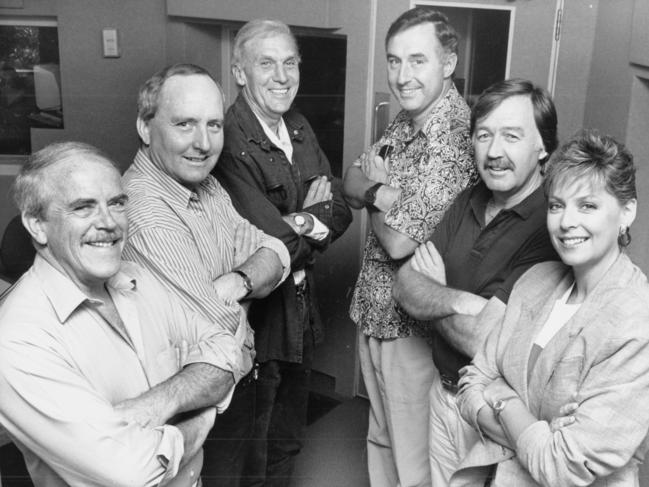
Station boss Brian White said that apart from Negus, Gibson and Lane, funnyman John Blackman, “Good Morning Australia’’ host Steve Liebmann, Mark Day, Suzie Jarrett, Phillip Adams and Ernie Sigley also had been signed.
Only Gary O’Callaghan and Alan Jones retained their jobs, with Paul Hodges, Chris Kearnes, Geoff Marshall and Greg Lambert all being put off.
December 1986
John Laws signed the world’s most lucrative radio contract, worth an estimated $12 million.
At the midday signing at Sydney station 2GB, Laws, 51, promised to remain with the Macquarie Network for the rest of his working life.
Together with a new three-year contract with Mike Carlton, it effectively means top-rating 2GB locked the gate against rival radio stations seeking to poach Sydney’s most popular radio stars.
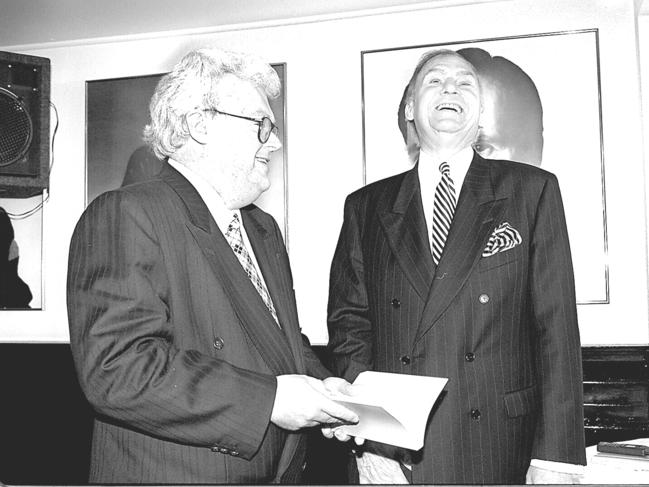
Laws and the 2GB general manager, Geoffrey Duncan, signed the contract just minutes after his final shift for 1986.
“Talents like John Laws do not walk in the door every day,’’ Duncan said.
“He is, in our opinion, producing better radio now than ever before in a career stretching over 35 years.’’
April 1988
Sydney radio host Ron Casey was stripped of his morning talkback program, hours after the Australian Broadcasting Tribunal found him guilty of breaching radio standards.
The breaches followed complaints of racist comments by Casey while on 2KY.
Casey, who said he had been hounded for “having the audacity to be critical of a minority,” was suspended indefinitely.
Casey was found guilty at a hearing of the tribunal of four breaches of the Radio Standards Act and 2KY producer Les Thompson guilty of one.

Thompson was not suspended.
Casey, who held the Order of Australia Medal for service to the media, had a further three years of a four-year contract to run and has maintained high ratings.
The sort of talk that led to his situation included saying of the ABC’s decision to appoint black Englishwoman Trisha Goddard as host of the 7.30 Report: “There’s only one bloody country in the world where this could happen – stupid multicultural Australia.”
The tribunal found Casey breached Radio Program Standard Three between April, 1987, and February, 1988.
September 1988
Jane Singleton was sacked from Sydney radio station 2GB.
The former presenter for ABC’s The 7.30 Report was dismissed while on holidays after ratings figures revealed a dramatic slump in her program.
Channel 10 newsreader Steve Liebmann will host the 9am to midday program from October 10 for eight weeks.
Results from the ratings survey showed 2GB had recorded only 6.3 per cent of audience.
June 1989
John Laws, Sydney’s radio king, was toppled – by a rock’n’roll station.
His 2UE morning show was beaten in the latest ratings survey by an FM station, Triple M. Laws dropped from 15.6 ratings points in the last survey to 13.2, while Triple M’s morningannouncer Stuart Cranney sprinted ahead from 14.9 to 17.0.
“I have been No.1 hundreds of times and although I am not No.1 now, we have certainly blistered them (the other talk back stations),’’ Laws said.
“We are not competing in the music arena with the FM stations – that is not what we are all about.’’
October 1989

Clive Robertson and Mike Jeffreys quit their Sydney morning radio show “by mutual agreement” with 2GB chiefs.
The pair – who became known as the Odd Couple after the show of chat, interviews, talkback and music was launched at the start of the year – did their last stint on air a week ago.
Officially, they have since both been on holidays, but were supposed to return to host the 9am to noon slot.
Both reached agreement with 2GB to axe the program which slumped in popularity from 5.5 ratings points to a new low of 4.1 in the third survey of the year, scoring above only 2JJJ.
“It feels very strange to be unemployed,” Robbo said from his home.
July 1992
East coast radio operator Wesgo bought Sydney radio station 2SM for $2 million and will re-position the ailing radio station in the marketplace.
Chief executive Garry Draffin said 2SM was languishing in the ratings with a music format appealing to the market sector dominated by 2WS, which Wesgo owns.
“The station will be re-positioned to serve an untapped market niche,” he said.
He said operating two radio stations in the one market would lead to cost efficiencies.
The vendor, the Catholic Archdiocese of Sydney, had also agreed to relinquish 50 per cent of the space 2SM occupies, he said.
August 1994
Sydney radio station 2Day FM underwent a “mini relaunch” to try to regain its No.1 FM status.

FM station 2WS snatched the top spot in the latest radio ratings survey. Austereo-owned 2Day dropped from 12.4 per cent to 10.9 overall, just 0.3 per cent ahead of arch rival Triple M.
However, they all lost market share, while FM newcomer Mix 106.5 FM (the former 2UW) posted gains.
2Day also lost listeners in the 18 to 24-year-old, and 25 to 39- year-old age groups, and in the peak breakfast timeslot.
Although 2Day’s changes were subtle, they represent a recognition by the station that increased competition in the FM radio marketplace will mean a bigger fight to win share and revenue.
The music mix now includes more ‘90s pop and dance tunes, Andrew Denton joined the breakfast show with Wendy Harmer two days a week and the Sunday Top 30 countdown has moved from 7pm to 6pm.
Listen to Wendy Harmer talking about her time at 2dayFM on The Matty Johns Podcast:
August 1995
The days don’t come much brighter than this for staff at radio 2UE.
The station knocked out the opposition and captured Sydney’s radio ratings crown in its 24th consecutive win.

The AGB McNair Radio Survey showed once again the power of the talkback format on the airwaves, with 2UE increasing its overall share from 13.4 to 15.8 per cent, a substantial gain of 2.4 points.
Alan Jones and John Laws maintained their vice-like grip on Sydney’s morning radio, with both announcers retaining their number one titles in their slots.
Breakfast broadcaster Jones recouped some of the 2.7 point loss in the previous ratings survey with a rise of 1.6 over his opponents, up from 17.7 to 19.3.
And the king of Sydney radio, morning announcer John Laws, remained at the zenith of the ratings – increasing his share of the Sydney radio audience by a striking 3.8 per cent from 15.7 to 19.5.
The golden talkback touch of 2UE continued with Stan Zemanek, who slipped .1 of a point from 12.3 to 12.2 but nonetheless won the evening slot between 7pm and midnight.
March 1996
2UE’s John Laws increased his stranglehold on Sydney’s vital morning radio timeslot.
Laws increased his lead in the timeslot by 3.2 points, posting a 17.7 per cent audience share in the ratings released.
In contrast, talkback rival Derryn Hinch at 2GB lost 0.7 ratings points since the February survey to record 4.7 in yesterday’s figures, finishing ninth in the timeslot.

This was the second ratings survey in which Hinch and Laws have gone head to head and represents a significant set back for the man who has vowed to “topple John Laws”.
“I know nothing about how Derryn has fared, it’s not my concern,” Laws said.
The result places Hinch in ninth position in his timeslot behind such stations as 2CH and Triple J.
“It simply proves what I have been saying all along,” said 2UE station manager John Brennan. “Hinch has no place in this market.”
January 1997
ABC Radio secured the national rights to broadcast Super League games, which will see matches from the new competition get priority over Australian Rugby League fixtures on Sundays.
The national broadcaster was close to pulling out of negotiations after it was unable to get Channel 9’s blackout clause on Monday night games lifted.
The clause prevents any radio station covering Super League’s match of the round to be played on Monday but the ABC will be able to broadcast any Monday night matches which are telecast live.
“It’s amazing they want that kind of guarantee. I think it smacks of paranoia as our coverage will not affect the ratings,” Head of ABC Radio sport Neville Oliver said.
ABC won the deal ahead of Sydney-based commercial stations 2UE and 2GB.
March 1997
Alan Jones had his 45th consecutive win, John Laws kept his dream alive and was back at No.1.
All in all, the ratings showed that 2UE will continue to dominate Sydney radio while it keeps its megastars happy – and together.
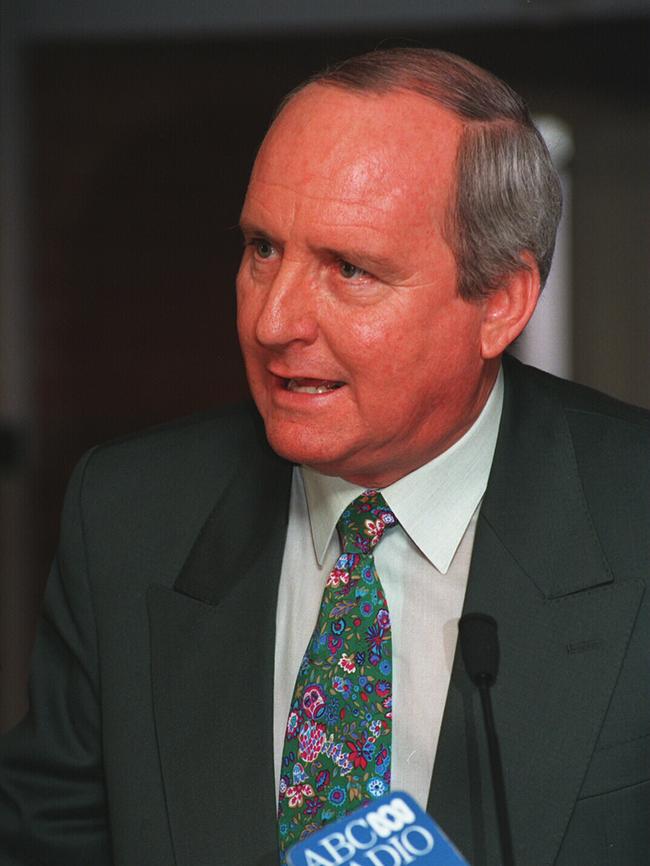
Jones recorded 21.3 on breakfast, a gain of 1.3, and Laws lifted his morning program by 1.8 to 14.7, beating the man who toppled him in the last survey, Ron E Sparks of 2Day FM, who fell back 0.8 to 12.4.
A cheerful Jones accepted his latest figures modestly, saying: “My people here work very hard.”
2UE’s Stan Zemanek continued to dominate nights with 18.2, John Stanley followed by Peter Bosly lifted the drive program by 1.3 to 9.2 and Brian Bury (afternoons) dropped by 0.7 to 9.5.
Other winners were: 2Day FM’s Keith Williams (afternoons) and Tony Martin and Mick Molloy (drive), who continued to top their timeslots with 13.7 and 15.7 respectively.
April 1998
In the face of what were monumentally ordinary radio ratings figures for struggling talkback station 2GB, management at the Sussex St headquarters were strangely ebullient.
“We’re actually very pleased with the results,” said program director Mark Spurway, reflecting on the station’s ninth placing overall.
“We’ve bottomed out and the only way to go now is up.”

2GB’s new breakfast presenter Graham Richardson dropped only 0.1 per cent but was still only attracting a comparatively poor 3.6 per cent of Sydney’s all-important breakfast radio audience.
2UE once again dominated the survey with strong performances from both its morning presenters Alan Jones and John Laws.
December 1999
The biggest betting game in Sydney radio was picking who will win the morning ratings race between John Laws on 2UE and Stan Zemanek on 2GB.

The numbers tell the story: at 2UE, Laws has a peak audience of 115,000 between 9am and midday.
At 2GB, there was a peak audience of 38,000 between 9am and midday – only a third that of Laws.
At 2UE, Zemanek had a peak audience of 38,000 between 9pm and midnight.
Most of Zemanek’s listeners won’t leave 2UE because older audiences like to stay with the same station day and night.
Those listeners tend to tune their radios to the breakfast station they want to wake up to the next morning.
March 2000
Veteran radio stars John Laws and Alan Jones continued to win back support despite losing credibility at last year’s cash-for-comment inquiry.
Strong performances in the latest Sydney audience survey by Jones in the breakfast slot and Laws in mornings have helped 2UE retain second place overall, just one point behind music station 2Day FM.
Jones gained 1.4 points to have an 18.9 per cent audience share, a five-point lead over 2Day’s Morning Crew with Wendy Harmer.
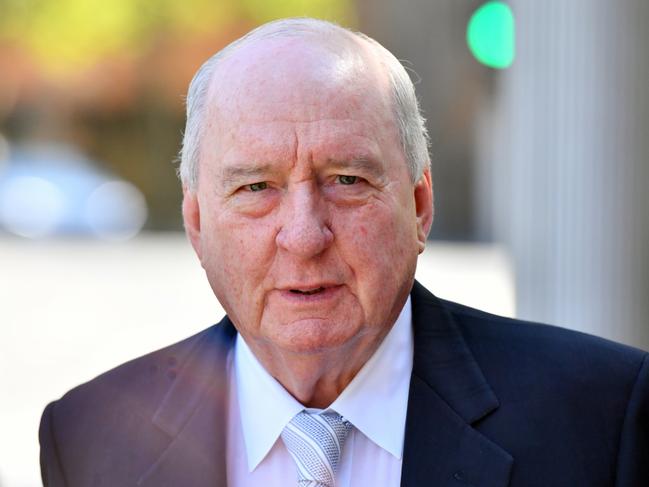
Laws improved 1.6 points to 15.4 per cent, his best survey in 18 months.
He was beaten into second place by 2Day’s Ron E. Sparks and a radio novice, Kate Neubauer, with 16.6 per cent.
February 2001
Radio 2GB saw an instant lift in its breakfast ratings in the latest survey with Philip Clark improving 2 per cent on Graham Richardson’s last audience figure.
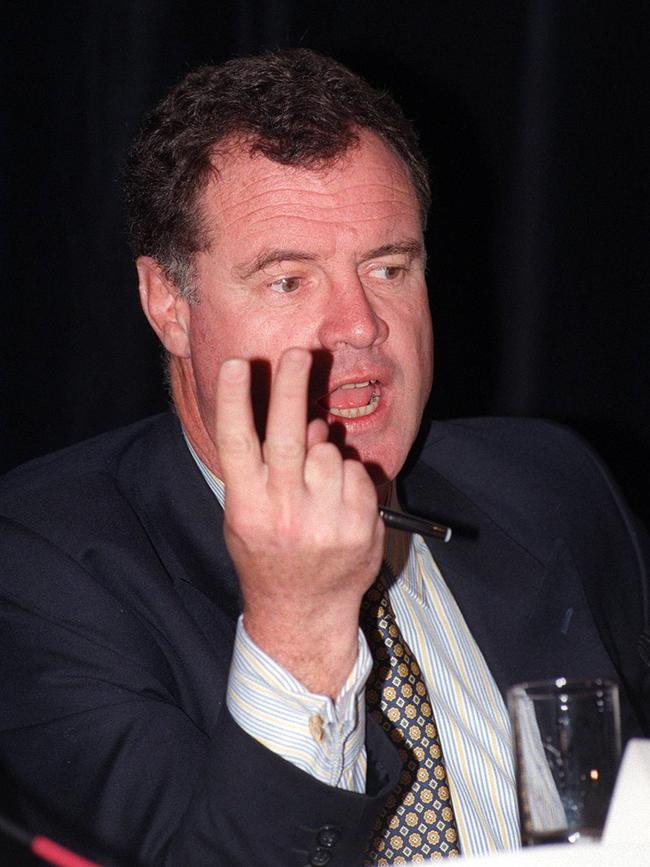
Tempering the result, however, was the fact rival talk hosts Alan Jones (2UE) and Angela Catterns (702) were only on air for part of the survey.
Station 702’s cricket coverage performed well in the latest ACNielsen survey, gaining an extra 145,000 listeners across the week.
The ABC station recorded an 8.6 per cent audience share in breakfast, ahead of 2GB on 5.7 per cent.
Mike Carlton of 2UE suffered a blow, with some of his regular listeners defecting to cricket on the ABC and adult music on the FM stations.
Easy-listening music station Mix FM celebrated its best survey in nearly three years with a 10.4 per cent audience share, almost beating Triple M.
2WS newcomer Simon Carey gained an extra 40,000 listeners with his new night time program featuring old rock ‘n’ roll hits.
February 2002
Melbourne will lose its only radio shock jock and Sydney might have to redefine the term when Steve Price takes up the reins as breakfast host at 2UE.
Price – the top-rating host of drivetime on Melbourne’s 3AW – was certainly opinionated and aggressive, but his surprisingly liberal views on multiculturalism and asylum-seekers are bound to test the loyalty of 2UE listeners used to a diet of Alan Jones and John Laws.

Rumours of Price’s move to Sydney had been around since 3AW’s parent company, Southern Cross, took control of 2UE last year.
But the move was hastened with news of Jones’s defection to Sydney rival 2GB.
Price had maintained an on-air disdain for everything Sydney for many years.
3AW’s general manager Graham Mott predicted Price would succeed at 2UE but on a different tack to Jones.
“Jones was a preacher who preaches to you every day but Price likes to involve the audience. He likes to talk to them. He’ll cut them off too if they’re stupid,’’ he said.
March 2003
Broadcasting boss Tony Bell was keeping a stiff upper lip about the year’s first Sydney radio survey, which dropped like a thunderclap on 2UE, but behind the scenes he was said to be devastated.
It was Bell who, two years ago, single-mindedly drove the Southern Cross decision to buy 2UE. He paid top price because the station dominated the Sydney talkback market and shared top billing overall with Austereo’s 2Day FM.
Today the once proud station was bumping along closer to the bottom than the top, in ninth place.
Alan Jones was still king of breakfast, but at another station. His replacement, Steve Price, was reduced to a third of Jones’ audience share.
It may be that Jones was always going to be seduced by 2GB and John Singleton, but there’s no doubt inside 2UE that Bell did not appreciate Jones’ fundamental importance to the station.
Then there was Ray Hadley. Even if Jones was a lost cause, Hadley was not. His first choice was to stay at 2UE, but Bell tried to cut his salary. He didn’t see Hadley’s value beyond weekend sport.
“Ray’s a first-class caller of sport, but you’d have to be out of your mind if you thought his departure from 2UE would mortally or even grievously wound us,” Bell told The Guide at the time.
Hadley then steamed past Laws in the morning timeslot.
December 2003
The radio industry was in shock after the ABC’s Angela Catterns knocked Alan Jones – Sydney’s king of breakfast radio – from the No1 position.
The final national radio ratings survey for 2003 revealed Sydney as the most competitive market, with the four top radio stations all winning less than 10 per cent of the overall listening audience.
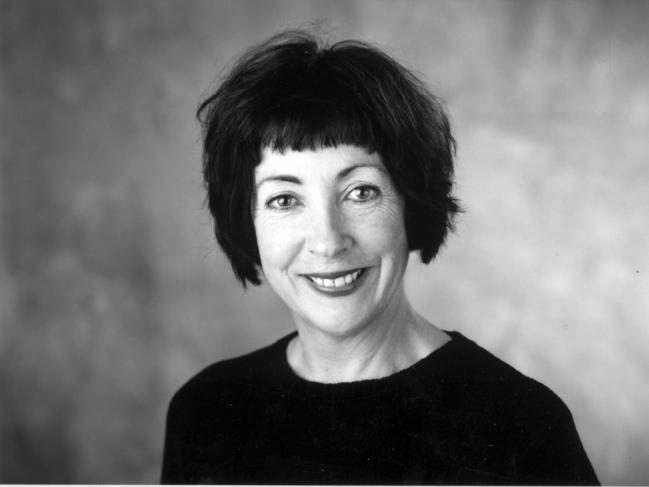
But Catterns’s win of 12.8 per cent of Sydney’s breakfast listeners was the major focus, having narrowly beaten Jones’s 12.7 per cent audience share after his ratings fell 2.2 points.
2GB’s Jones was believed to have won all breakfast surveys since starting in the timeslot in March 1988 – apart from one in February 2002 when he was on air for only two of the eight survey weeks after leaving rival 2UE.
Catterns, who was better known nationally as a former Triple J host, lifted her Sydney ratings 1.9 points in the latest survey.
The ABC believed the win in the Sydney breakfast market was its first since records began in 1975.
December 2004
Before the year’s eighth and final radio ratings were released last week, 2GB morning presenter Ray Hadley was filled with dread.

With 2UE’s John Laws snapping at his heels in the seventh survey, Hadley feared his golden run throughout 2004 was about to end.
“Laws had plenty of publicity from attacking, then apologising to, homosexuals, and I thought he might benefit from that,’’ Hadley said, referring to comments Laws made about Carson Kressley, a star of the television program Queer Eye For The Straight Guy.
But in the year’s final survey, Hadley attracted 12.2 per cent of the available audience, 1.2 per cent ahead of Laws.
“For me to beat John Laws in every survey this year is beyond my expectations,’’ he said.
The ding-dong battle between Laws, the master, and Hadley, his former apprentice, was a prime example of the competitive edge surrounding Sydney radio in 2004.
Boosted by the arrival of Mick Molloy and Fifi Box, Triple M rose from near-oblivion (5.8 per cent) at the beginning of 2004 to a solid 8 per cent at year’s end, peaking at 8.6 per cent.
August 2005
DMG Radio Australia was pleased with the progress of Vega, the radio station it launched in Sydney two weeks ago, but will spend the next three months finetuning its programming.
Chief executive Paul Thompson said Vega, aimed at people aged 40 to 60, had “a steady opening” in Sydney.
“Vega Sydney is going fine, but there is still a lot of work to be done,” Thompson said. “We’re not there yet.”
Rival radio executives claimed DMG, which also owns the Nova network, would have to rejig Vega’s format in response to listener complaints about some of the music it was playing and the weak performance of some announcers.
But Mr Thompson said DMG had always planned to finetune the Sydney station during its first few months on air.
March 2006
DMG Radio Australia dumped Sydney morning announcer Wendy Harmer and hired a new program director as it moves to try to lift the performance of its floundering Vega stations in Sydney and Melbourne.
Although DMG and Harmer, who figures prominently in the current “Life’s too short” ad campaign for Vega, insisted that her sudden exit was a mutual decision, industry sources said she was the first victim of an overhaul of the stations.
DMG spent $158 million buying the licences used to set up Vega, which pitched its hybrid music-talk format at people aged over 40.
Before Vega went to air in Sydney on August 1 and in Melbourne on September 5, DMG sunk $2 million into research to determine its format and positioning. It has since spent about $3 million marketing the stations.
So far, the $163 million investment has produced disastrous results. Vega has captured just 1.7 per cent of radio listeners in Sydney, while Vega Melbourne’s audience share was 1.1 per cent.
May 2006
ABC Radio management was breathing easier because Sydney listeners are gradually returning to local station 702 after a tumultuous year of chopping and changing presenters.
Melburnian Virginia Trioli had a slow start on the Sydney station with Mornings after controversially replacing Sally Loane last October.
The latest Nielsen Media survey showed Trioli increased her audience share from 6.3 per cent to 7.7 per cent, or another 25,000 listeners.

Former Triple J host Adam Spencer’s Breakfast increased the breakfast-time share slightly to 8.8 per cent, and Drive presenter Richard Glover reclaimed the top spot in the AM drivetime shift.
The figures are still well below those of a year ago, before Breakfast presenter Angela Catterns resigned to work at the new baby-boomer station, Vega, but it was a big enough improvement for 702 to regain second spot in the AM talk market, ahead of 2UE.
That station’s new breakfast show with Mike Carlton and Peter FitzSimons as co-presenters slipped back one rating point to 8.5 per cent.
February 2007
Sydney clearly remained Jonestown after the year’s first radio ratings survey, with 2GB and its breakfast star dominating.
Alan Jones led the field in breakfast with a 16.2 per cent share, six points ahead of his nearest commercial rival.
His stablemate Ray Hadley also won the morning slot handsomely.
Jones endured something of a crisis late last year with the publication of Jonestown, the book by the ABC investigative journalist Chris Masters on the broadcaster’s private life.

The book may have added to Masters’s bank balance, but it seems to have left Jones’s audience intact.
The Sydney ABC station, 702, also fared well. Adam Spencer has comfortably filled Angela Catterns’s shoes at breakfast, with a 12.3 per cent audience share, placing him second to Jones. Richard Glover remained the highest-rating drive presenter, despite increased competition from the comedians Hamish Blake and Andy Lee on 2Day FM and Akmal Saleh on Nova.
July 2008
The Nine Network suspended outspoken rugby league commentator Phil Gould for one week after he hectored NRL boss David Gallop on Sydney radio.

In a heated interview on Triple M radio, Gould disputed figures cited by Gallop about growing crowds at league games, talking over the NRL chief executive officer.
“You’ve got your little patter down pat,’’ Gould told Gallop.
“You’re wrong – you’re wrong.’’
Gould also disputed Gallop’s claims that NRL crowds were growing, claiming the NRL was overstating crowd figures.
Nine chief executive David Gyngell rang Gould afterwards to tell him he would not be required on this week’s episode of The Footy Show.
November 2009
Penance in commercial radio is a minor thing. Controversial 2Day FM jock Kyle Sandilands and his willing apprentice, Jackie O, have recovered in the latest Nielsen radio ratings.
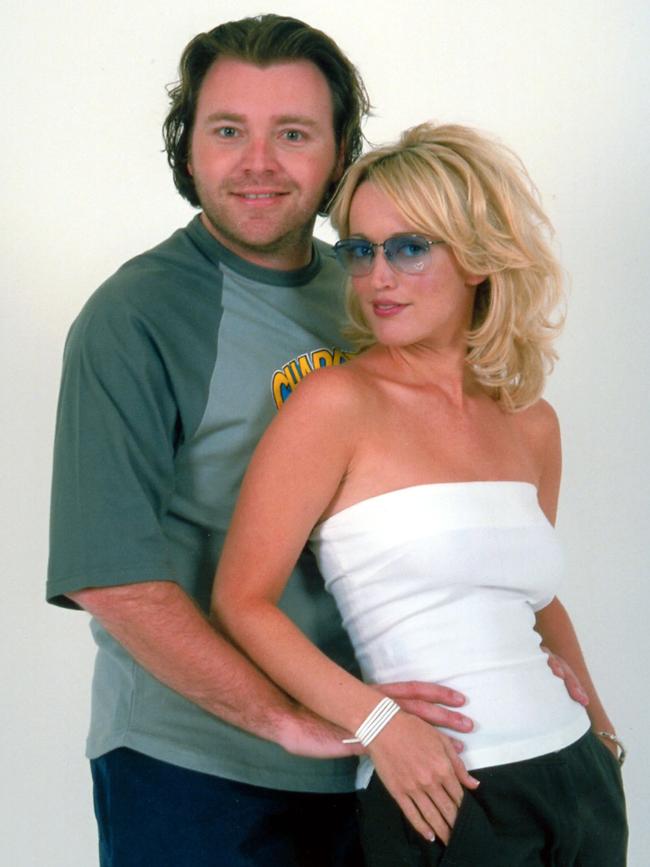
The Sydney breakfast duo, who have spent much of the second half of the year dealing with on-air and online faux pas, added 1.2 points for an 11.0 per cent share behind 2GB’s 16.6 per cent for Alan Jones (and fill-in Jason Morrison) and 12 per cent for ABC702’s Adam Spencer and AM.
Austereo’s Sydney station dropped another 0.4 points for a 3.4 per cent share, its worst ever.
Talk maintained ascendancy in most markets, as talk titans 2GB, 3AW and 5AA maintained their top spots in Sydney, Melbourne and Adelaide.
Macquarie’s 2GB talk stars Jones and Ray Hadley maintained their ascendancy with shares of 16.6 per cent and 15.3 per cent from breakfast to noon.
November 2010
Ailing talkback radio station 2UE suffered another blow with breakfast duo Sandy Aloisi and John Stanley confirming they wouldn’t return to the airwaves next year.
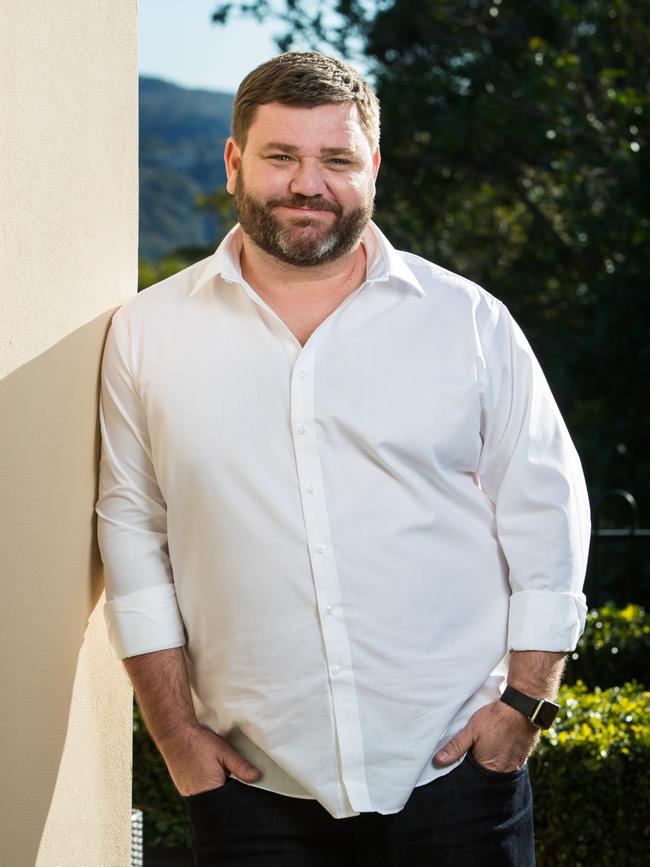
Their departure comes a week after morning host Steve Liebmann, who was thrashed in the ratings by 2GB’s Ray Hadley and ABC’s Deborah Cameron, announced that he was quitting.
Aloisi said she would take the summer to consider whether she will take up a different role at 2UE, owned by Fairfax Media.
“Perhaps I’ll stay (with the network), I really don’t know at this point,’’ she said.
Aloisi and Stanley placed seventh in the latest Sydney radio survey with a 5.2 per cent share. By contrast, main rival Alan Jones at 2GB secured a 17.7 per cent audience share. The results mirror that of 2UE generally, which was beaten in all slots by 2GB.
2UE recruited Triple M’s Paul Murray for next year’s line-up, part of its planned “generational shift’’, programmer Peter Brennan said.
May 2011
Ray Hadley became one of Sydney’s most successful radio hosts, overtaking mentors John Laws and 2GB stablemate Alan Jones to dominate the airwaves.
The ratings – based on the past nine weeks – made Hadley the highest ever listened to radio announcer in Australian radio, commanding an unprecedented 20.1 per cent of the 9am-noon audience.
But the well-known wolf was sheepish about his jump over the past eight weeks.
“Hard work,’’ Hadley said when asked what it took to command such an audience over the Macquarie Radio Network’s Sydney and regional footprint of more than 50 stations.

Hadley’s leap across the 20 per cent barrier puts him into new territory – and further hammered silver nails into commercial AM coffin-competitor 2UE, which scored just 5.3 per cent of the overall seven-day audience compared with 2GB’s dominating 16.7 per cent.
None of 2UE’s new breed – Jason Morrison, David Oldfield, Michael Smith and Paul Murray – breached a 6 per cent share.
March 2013
Social media proved they could land a punch against powerful shock jocks, but Twitter and Facebook were yet to produce a knockout blow.
Alan Jones experienced some serious jabs last year, when he faced an aggressive social media campaign against him and his partner, John Singleton’s Macquarie Radio Network, in the wake of the veteran broadcaster’s comments that Julia Gillard’s father had “died of shame’’.
More than 60 advertisers turned away in fear of having customers boycott their products, costing Macquarie about $1.5 million in lost revenue.
But the brouhaha had little effect on Jones’s standing at the top of the ratings, and advertisers have returned to the 2GB station where his breakfast show is based.
The incident demonstrated for the first time that the rise of social media has enabled communities of people with similar views to weld together and take issue with those who offend them.
“The power of social media has ascended and they’ve directed that power at shock jocks to try to reduce their power or teach them a lesson,’’ Steve Allen, managing director of media agency Fusion Strategy, said.
Soon after the Jones storm, Southern Cross Austereo chief executive Rhys Holleran found himself under fire after the company’s 2DayFM hosts in Sydney set up a telephone prank involving the British royal family that went horribly wrong.
The prank cost the company about $2.8m, mainly in lost advertising, after a British nurse who was unwittingly involved in the prank committed suicide.
March 2013
Summer was not so sweet for Alan Jones and major talk stations, according to the first radio survey of the year.
Both leading commercial talk stations, 3AW and 2GB, suffered falls in a ratings survey that traditionally favours music stations and ABC network Triple J.
But Jones’s 80th-consecutive survey win in the Sydney breakfast slot continued a worrying trend.
His fall of 2.8 points to a 15.4 per cent share represents a slow year-on-year decline. Jones began the 2010 year with a 20 per cent share, 2011 with 18.8 per cent and last year with 16.6 per cent.
And all three results rose on the final survey of the previous year. Not that Macquarie Radio Network need be too concerned. 2GB maintained supremacy in Sydney despite a two-point station fall to a 12 per cent share, 1.1 share points ahead of ABC702 and 7.1 points clear of Fairfax Media’s declining 2UE.
May 2014
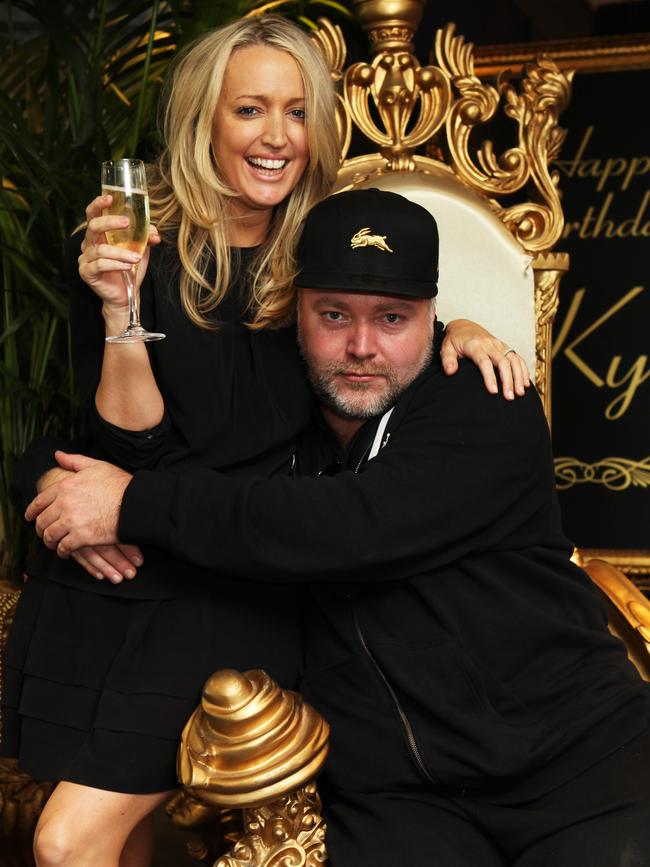
ARN’s new Sydney contemporary hits station KIIS1065 stopped taking advertising for May in a further sign of its new-found popularity.
The newly rebranded music station began its life earlier this year with a stunning first radio ratings result, which it consolidated with FM leadership in Sydney in the second GfK survey of the year.
The resurgence was led by costly new recruits Kyle Sandilands and Jackie O in breakfast with a 10.9 per cent share and Tim “Rosso” Ross’s career-best ratings in drive for the old Mix station.
Demand for direct advertising was very strong for the new station and ARN sales teams were told to move on to selling June and beyond.
June 2014
For the first time in 53 radio ratings surveys, King Kyle has been dethroned.
The latest figures show that Kyle and Jackie O lost their title as the most listened to FM breakfast radio show in Sydney.
The Kiis FM breakfast duo came second in the ratings with their WSFM stablemates, Jonesy and Amanda, picking up listeners to secure first place.
Nova’s Fitzy and Wippa were in third place, Triple M’s Grill Team are fourth and the new 2Day FM breakfast show had yet another shocker.
July 2015
The embattled Southern Cross Austereo welcomed returning drive titans Hamish and Andy with rises for every one of its metro stations in the fourth radio ratings survey of the year.
The results, including a rise for its troubled Sydney station 2Day/hit104.1 and lifts to second in FM for Triple M in Sydney and Melbourne, took the shine off former stars Kyle and Jackie O, who slumped 1.6 points for KIIS in Sydney and placed increased pressure on the Nova network.
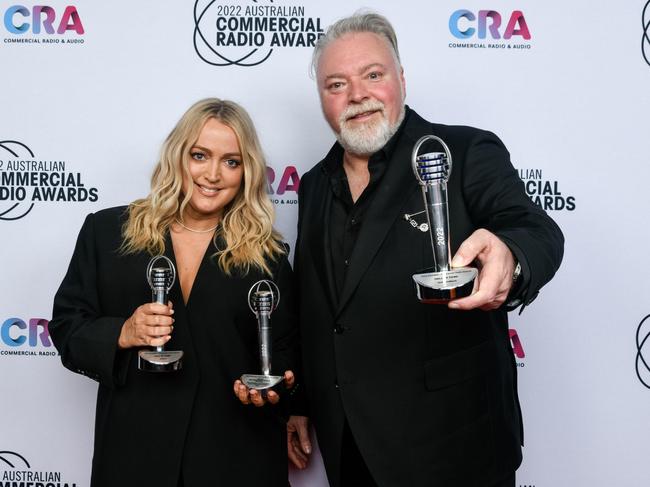
SCA’s metro content director Guy Dobson said the “green shoots starting across the Hit network” were encouraging. “There’s better days ahead.”
Nova Entertainment Co’s Paul Jackson said the network had record cumulative audiences in every market so “our big picture story is fabulous”.
MRN’s 2GB extended its lead in Sydney with a 0.9 point rise to a 12.8 per cent share, Jones regaining two points he dropped in the last survey, to a 16 per cent share.
March 2016
The first radio ratings of the year bamboozled the market, with some odd results attributed to a “rogue” opening survey.
Talk station 2GB held the top spot in Sydney despite a four-point fall for Ray Hadley.
Nationally, this survey tended to skew in favour of music stations targeting older listeners, with easy-listening station Smoothfm rising strongly in Sydney and the Triple M network rating well.
Research company GfK was understood to have told at least one broadcaster it re-counted results in one market, believed to be Sydney, because of the unexpected results.
Results also favoured more established broadcasters ahead of new teams. KIIS’s Kyle and Jackie O recorded their best share for the Sydney ARN station, rising 2.4 points to a 12.5 per cent share.
December 2017
News talkback station 2GB finished the year on a high, topping the radio ratings for the final survey of 2017.
The Macquarie Media Ltd station remains Sydney’s most listened to radio broadcaster overall with a share of 11.3 per cent of the whole market, well ahead of KIIS at 9.9 per cent and WSFM at 9.7 per cent and Smoothfm at an 8.6 per cent share of the market.
For the all important breakfast shift, Alan Jones remains king of Sydney radio with a whopping 13.3 per cent share, ahead of KIIS duo Kyle and Jackie O at 12.1 per cent, Jonesy and Amanda at WSFM on 10 per cent an ABC Sydney’s 9.4 per cent.
Ailing 2DAY FM breakfast show, with Em Rusciano at the helm, continued to haemorrhage listeners with its limping share of 2.8 per cent.

Across the board though, 2GB reigned supreme.
For mornings, Ray Hadley finished 2017 with a share of 14.9 per cent. Chris Smith in afternoons registered a leading share of 10.8 per cent while Steve Price was top for nights with a 17 per cent share.
November 2018
Macquarie Radio’s 2GB network may have taken a small hit this ratings survey but remained well and truly on top.
Sydney radio king Alan Jones’ breakfast show dropped 1.5 percentage points to sit at a whopping 17.5 per cent share of the overall market, according to the latest GFK Radio Ratings.
That was well ahead of any competition with his nearest rivals, Kyle and Jackie O on KIIS FM and ABC Sydney both at 10.7 per cent in the breakfast market.
They are followed by Jonesy and Amanda at 7.2 per cent, a drop of 2.1 per cent, for their WSFM show, closely trailed by Nova 96.9s Fitzy and Wippa, who remained stable at 7.1 per cent.
2GBs mornings host Ray Hadley shed 2.5 percentage points but remained on top. He held an incredible share of 17.7 per cent, a long shot from any rivals with his nearest competition coming from KIIS at 9.3 per cent.
November 2019
The decision to oust Steve Price from his 2GB afternoon radio shift was validated in the latest radio ratings survey results.
The final GfK Radio Ratings survey of 2019 showed Price’s afternoon show dropped 0.6 percentage points to a share of 9.3 per cent of the market in that timeslot, behind smoothfm at 10.4 per cent.
The results come days after 2GB parent company Macquarie Media Limited announced Price’s departure from the station.
Macquarie also parted ways with veteran finance reporter Ross Greenwood with Brooke Corte to step into his shoes on 2GB in 2020.
Across all stations, 2GB finished the year as yet again the top broadcaster despite a drop of 1.2 percentage points to an overall share of 12.1 per cent.
That was well ahead of its nearest rivals, smoothfm at 9.3 per cent (steady), ABC Sydney at 8.9 per cent (up 0.8) and KIIS 106.5 at 8.8 per cent (down 0.2).
In all important breakfast, Alan Jones remains king of the airwaves with a strong 14.7 per cent share (down 1.4), well ahead of KIIS duo Kyle Sandilands and Jackie O at 11.4 per cent (up 0.2) and ABC Sydney at 10.5 per cent (up 0.8).
July 2021
2GB lost the breakfast radio ratings for the first time since 2003 with Ben Fordham handing over the crown to Kyle Sandilands and Jackie O Henderson.
The KIIS 106.5 duo reigned supreme in the all important breakfast timeslot, jumping an impressive 2.6 percentage points to a leading share of the Sydney market of 15.5 per cent.
It was their highest radio ratings ever since the duo got together more than two decades ago.
And it comes ahead of 2GB’s Ben Fordham at 13.3 per cent, a drop of just 0.2 of a percentage point.
On holiday in Far North Queensland, Sandilands said: “A special shout-out today to the radio executives that told Jackie and I in 2013 that our show had peaked and would no longer rate.”
July 2022
It seems the weak link at 2GB’s market leading station was drive.
The latest radio ratings figures showed Nine Radio’s 3pm to 6pm shift has dropped to a 6.8 per cent share of the market (down 0.4), making it the sixth ranking station in the prized slot.
That was in stark contrast to 2020 when Ben Fordham jumped from drive to breakfast to replace Alan Jones. When in drive Fordham was consistently the top show in the timeslot.
Much loved TV sport broadcaster Jim Wilson took over from Fordham, in what was seen by many as a surprise choice due to his lack of radio and news experience.

Wilson’s first survey result in 2020, a year heavily impacted by Covid, came in at 9.1 per cent.
With the fourth of eight GfK ratings figures released, smoothfm was the top station in the timeslot with an 11.7 per cent share, ahead of KIIS at 10.8 per cent, WSFM at 10.3 per cent, Nova at 8.2 per cent and ABC Sydney at 6.9 per cent.
April 2023
The gap narrowed in the all important Sydney breakfast radio market with KIIS FM remaining No.1 but Ben Fordham on 2GB fighting back after taking a hit in the first survey of the year.
Overall though, talkback station 2GB reclaimed its title as top station in Sydney with a share of 11.8 per cent of the listening market, beating KIIS on 11.5 per cent.

The second of eight GfK radio ratings surveys for the year shows a fierce battle playing out for listeners.
In breakfast, KIIS duo Kyle Sandilands and Jackie ‘O’ Henderson came in with a leading 15.1 per cent share, representing a drop of 0.8 of a percentage point on the previous survey, but still ahead of Fordham on 2GB with his share of 14.7 per cent, rising 0.7 of a percentage point.
The team at 2Day FM were cheering after the show there of Dave Hughes, Ed Kavalee and Erin Molan scored the highest ratings in breakfast in a decade.
“We have a laugh and we give away a s***load of cash to our listeners,” Molan said.




